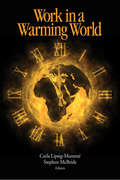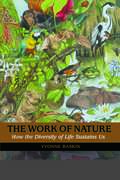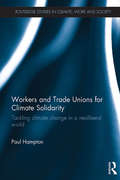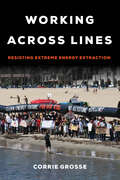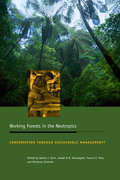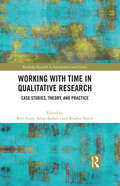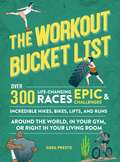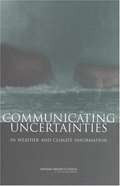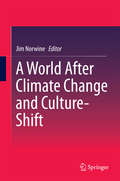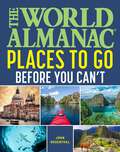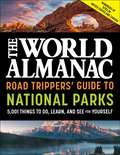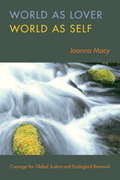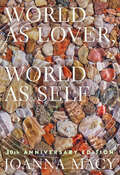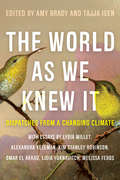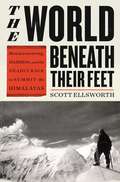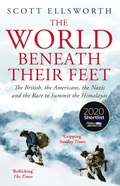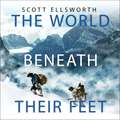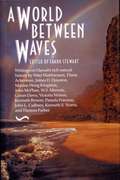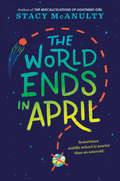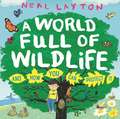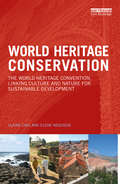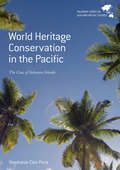- Table View
- List View
Work in a Warming World
by Stephen Mcbride Carla Lipsig-MumméGlobal warming is perhaps the greatest challenge facing the twenty-first century. Environmental polices on the one hand, and economic and labour market polices on the other, often exist in separate silos creating a dilemma that Work in a Warming World confronts. The world of work - goods, services, and resources - produces most of the greenhouse gases created by human activity. In engaging essays, contributors demonstrate how the world of work and the labour movement need to become involved in the struggle to slow global warming, and the ways in which environmental and economic policies need to be linked dynamically in order to effect positive change. Addressing the dichotomy of competing public policies in a Canadian context, Work in a Warming World presents ways of creating an effective response to global warming and key building blocks toward a national climate strategy.
The Work of Nature: How The Diversity Of Life Sustains Us
by Harold A. Mooney Yvonne Baskin Jane Lubchenco Abigail Rorer Paul R. Ehrlich"We do not question that flesh and bone and leaf litter will decay to dust, that seeds will sprout season after season and find renewed nourishment in the soil, that rivers can flow endlessly without running dry, that we can breathe a lifetime without depleting the air of oxygen.... What humans have not fully appreciated until recently is that these services are the work of nature, performed by the rich diversity of microbes, plants, and animals on the earth." --from The Work of NatureThe lavish array of organisms known as "biodiversity" is an intricately linked web that makes the earth a uniquely habitable planet. Yet pressures from human activities are destroying biodiversity at an unprecedented rate. How many species can be lost before the ecological systems that nurture life begin to break down?In The Work of Nature, noted science writer Yvonne Baskin examines the threats posed to humans by the loss of biodiversity. She summarizes and explains key findings from the ecological sciences, highlighting examples from around the world where shifts in species have affected the provision of clean air, pure water, fertile soils, lush landscapes, and stable natural communities.As Baskin makes clear, biodiversity is much more than number of species -- it includes the complexity, richness, and abundance of nature at all levels, from the genes carried by local populations to the layout of communities and ecosystems across the landscape. Ecologists are increasingly aware that mankind's wanton destruction of living organisms -- the planet's work force -- threatens to erode our basic life support services. With uncommon grace and eloquence, Baskin demonstrates how and why that is so.Distilling and bringing to life the work of the world's leading ecologists, The Work of Nature is the first book of its kind to clearly explain the practical consequences of declining biodiversity on ecosystem health and function.
Workers and Trade Unions for Climate Solidarity: Tackling climate change in a neoliberal world (Routledge Studies in Climate, Work and Society)
by Paul HamptonThis book is a theoretically rich and empirically grounded account of UK trade union engagement with climate change over the last three decades. It offers a rigorous critique of the mainstream neoliberal and ecological modernisation approaches, extending the concepts of Marxist social and employment relations theory to the climate realm. The book applies insights from employment relations to the political economy of climate change, developing a model for understanding trade union behaviour over climate matters. The strong interdisciplinary approach draws together lessons from both physical and social science, providing an original empirical investigation into the climate politics of the UK trade union movement from high level officials down to workplace climate representatives, from issues of climate jobs to workers’ climate action. This book will be of great interest to students and researchers in environmental politics, climate change and environmental sociology.
Working across Lines: Resisting Extreme Energy Extraction
by Corrie GrosseHow are communities uniting against fracking and tar sands to change our energy future? Working across Lines offers a detailed comparative analysis of climate justice coalitions in California and Idaho—two states with distinct fossil fuel histories, environmental contexts, and political cultures. Drawing on ethnographic evidence from 106 in-depth interviews and three years of participant observation, Corrie Grosse investigates the ways people build effective energy justice coalitions across differences in political views, race and ethnicity, age, and strategic preferences. This book argues for four practices that are critical for movement building: focusing on core values of justice, accountability, and integrity; identifying the roots of injustice; cultivating relationships among activists; and welcoming difference. In focusing on coalitions related to energy and climate justice, Grosse provides important models for bridging divides to reach common goals. These lessons are more relevant than ever.
Working Childhoods
by Jane DysonWorking Childhoods draws upon research in the Indian Himalayas to provide a theoretically-informed account of children's lives in a remote part of the world. The book shows that children in their pre-teens and teens are lynchpins of the rural economy, spending hours each day herding cattle, collecting leaves, and juggling household tasks with schoolwork. Through documenting in painstaking detail children's stories, songs, friendships, fears and tribulations, the book offers a powerful account of youth agency and young people's rich relationship with the natural world. The 'environment' emerges not only as a crucial economic resource but also as a basis for developing gendered ideas of self. The book should be essential reading for anyone interested in better understanding childhood, youth, the environment, and development within and beyond India - including anthropologists, sociologists, geographers, development studies scholars, and South Asianists.
Working Forests in the Neotropics: Conservation Through Sustainable Management? (Biology and Resource Management Series)
by Zarin Daniel J. Janaki R. R. Alavalapati Frances E. Putz Marianne C. Schmink Eds.Neotropical forests sustain a wealth of biodiversity, provide a wide range of ecosystem services and products, and support the livelihoods of millions of people. But is forest management a viable conservation strategy in the tropics? Supporters of sustainable forest management have promoted it as a solution to problems of both biodiversity protection and economic stagnation. Detractors insist that any conservation strategy short of fully protected status is a waste of resources and that forest management actually hastens deforestation. By focusing on a set of critical issues and case studies, this book explores the territory between these positions, highlighting the major factors that contribute to or detract from the chances of achieving forest conservation through sustainable management.
Working with Time in Qualitative Research: Case Studies, Theory and Practice (Routledge Research in Anticipation and Futures)
by Keri FacerThis volume creates a conversation between researchers who are actively exploring how working with and reflecting upon time and temporality in the research process can generate new accounts and understandings of social and cultural phenomena and bring new ways of knowing and being into existence. The book makes a significant contribution to the enhancement of the social sciences and humanities by charting research methods that link reflectively articulate notions of time to knowledge production in these areas. Contributors explore how researchers are beginning to adopt tactics such as time visibility, hacking time, making time, witnessing temporal power and caring for temporal disruptions as resources for qualitative research. The book collects fields as disparate as futures studies and history, literary analysis and urban design, utopian studies, and science and technology studies, bringing together those who are working with temporality reflexively as a powerful epistemological tool for scholarship and research inquiry. It surfaces and foregrounds the methodological challenges and possibilities raised. In so doing, this collection will serve as a resource for both new and experienced researchers in the humanities and social sciences, seeking to understand the tools that are emerging, both theoretical and methodological, for working with time as part of research design. This book will be of great interest to students and scholars of research methods, time and temporality, future studies, and the environmental humanities.
The Workout Bucket List: Over 300 Life-Changing Races, Epic Challenges, and Incredible Hikes, Bikes, Lifts, and Runs around the World, in Your Gym, or Right in Your Living Room
by Greg PrestoDo leg day like America's toughest firefighter, join a bicycle race in the mountains of Colorado, or get pumped like a POTUS with this unique and well researched collection of exercises that will encourage and inspire you to try some of the most challenging and ridiculously fun workouts at home and around the world!For most of us, exercise can be a dreaded task, one to be postponed, procrastinated, or avoided. We all know the excuses: exercise is boring; I don't have time for the gym; there's no room in my apartment; I need to be motivated. The real problem is that we're used to old fitness routines and the same monotonous gym equipment, but The Workout Bucket List promises that exercise can, and will, be fun again. Combine history, pop culture, travel, inspiration, and health and you've got the perfect book to help break down your mental barriers to shake up your fitness regimen. Author and fitness journalist Greg Presto suggests countless exercises and activities around the world—or in your very own home—for the ultimate fitness bucket list, whether it's biking with zebras, entering the Tour de Donut, climbing the tallest mountain east of the Mississippi, training like a Baywatch lifeguard, or starting your day with a workout that you might have done in the Titanic's gym. The Workout Bucket List is here to challenge you to try the world's toughest, most interesting, and fun workouts, inspiring the fitness adventurer in all of us.
A Workshop Summary Communicating Uncertainties in Weather and Climate Information
by Elbert W. FridayThe report explores how best to communicate weather and climate information by presenting five case studies, selected to illustrate a range of time scales and issues, from the forecasting of weather events, to providing seasonal outlooks, to projecting climate change.
A World After Climate Change and Culture-Shift
by Jim NorwineIn this book, an international team of environmental and social scientists explain two powerful current change-engines and how their effects, and our responses to them, will transform Earth and humankind into the 22nd-century (c. 2100). This book begins by detailing the current state of knowledge about these two ongoing, accelerating and potentially world-transforming changes: climate change, in the form of global warming, and a profound emerging shift of normative cultural condition toward the assumptions and values often associated with so-called postmodernity, such as tolerance, diversity, self-referentiality, and dubiety replaced with certainty. Next, the contributors imagine, explain and debate the most likely consequent transformations of human and natural ecologies and economies that will take place by the end of the 21st-century. In 16 compellingly original, provocative and readable chapters, A World after Climate Change and Culture-Shift presents a one-of-a-kind vision of our current age as a "hinge" or axial century, one driven by the most radical combined change of nature and culture since the rise of agriculture at the end of the last Ice Age some 10 millennia ago. This book is highly recommended to scholars and students of the environmental and social sciences, as well as to all readers interested in how changes in nature and culture will work together to reshape our world and ourselves. "I cannot think of a book more geared to advancing the art and science of geography. " - Yi-Fu Tuan, J. K. Wright and Vilas Professor Emeritus of Geography, University of Wisconsin-Madison"Outstanding," "unique," and "exceptional timeliness of topic and ambition ofvision". - Richard Marston, University Distinguished Professor, Kansas State University; past president, Association of American Geographers
The World Almanac Places to Go Before You Can't
by John RosenthalFrom the #1 New York Times bestselling World Almanac comes a full-color book celebrating the world&’s most breathtaking, exciting, and astonishing attractions––places you&’ll want to visit before it&’s too late. Add to your personal list of must-see destinations with this exceptional collection of locales, from the familiar to the far-flung. The World Almanac Places to Go Before You Can&’t gathers gorgeous photography and local details about some of the world&’s greatest, most eye-popping sites. Gain a new perspective on attractions closer to home, from North Carolina&’s Outer Banks to Yosemite&’s ancient sequoias and stunning waterfalls. Or complete your bucket list a little further afield, whether you&’re drawn to the Great Barrier Reef or the Galapagos. With an emphasis on experiencing all you can before these places disappear or change forever, this guide tempts curious travelers of all types to begin making travel plans tomorrow. Hundreds of enticing color images are complemented by expert advice on where to go, when to travel, and how to make the most of the experience while respecting these ever-changing sites and their caretakers.
The World Almanac Road Trippers' Guide to National Parks: 5,001 Things to Do, Learn, and See for Yourself
by World AlmanacFrom the #1 New York Times bestselling World Almanac comes a brand-new, full-color book celebrating the National Parks––"America's best idea"––and providing a valuable resource for first-time visitors and longtime park fans alike. From the rugged, rocky coasts of Acadia to the geysers and hot springs of Yellowstone to the in-your-face beauty of the Grand Canyon, the national parks of North America offer visitors a new sight or bucket-list-worthy experience at every turn. The World Almanac Road Trippers' Guide to National Parks provides detailed history, itineraries, visitor information, gorgeous photography, recommended hiking routes, and other not-to-be-missed sites and activities for anyone seeking to make the most out of the many resources of the national parks systems of the United States and Canada. Divided into travel regions for convenient research and planning whether the trip length is a day or a year, this is a tool eager travelers will use to discover new sites and off-the-beaten-path destinations again and again.
World as Lover, World as Self: A Guide to Living Fully in Turbulent times
by Joanna MacyThis overview of Joanna Macy's innovative work combines deep ecology, general systems theory, and the Buddha's teachings on interdependent co-arising. A blueprint for social change, World as Lover, World as Self shows how we can reverse the destructive attitudes that threaten our world, with concrete suggestions on how to address "An Inconvenient Truth".The essays are based on the Buddha's teachings of "Paticca samuppada" (interdependent co-arising). Reduced to deceptively simple terms this says that everything in the world- every object, feeling, emotion, and action is influenced by a huge, all-inclusive web of factors. Any change in the condition of any one thing in this web affects everything else by virtue of interconnectedness. It makes World as Lover World as Self a quintessential guide for those readers who want to integrate their Buddhist practice with concerns for social issues like global warming. It also breaches the dualities that have haunted much of both Eastern and Western thought, namely the dichotomies between mind/body, humanity/nature, reason/emotion, self/world, science/spirituality.The premise is that self-centeredness, and modern individualisms are ultimately destructive for the environment. We are not individuals separate from the world. Instead we are always "co-arising" or co-creating the world, and we cannot escape the consequence of what we do to the environment. Joanna Macy presents a re-focusing on the beauty of the natural world as personally nourishing and replenishment as one way to move away from our self-centeredness. For this revised edition the author will be adding some chapters as well as removing others. The new ones will deal largely with her new work around the "Great Turning" that will add a somewhat more visionary, future-oriented, and strategic dimension to the book. World as Lover, World as Self shows us how to realize that the earth is an extension of ourselves and how to discover the knowledge, authority and courage to respond creatively to the crises of our time. Foreword Thich Nhat Hanh
World as Lover, World as Self: Courage for Global Justice and Planetary Renewal
by Joanna MacyThis overview of Joanna Macy's innovative work combines deep ecology, general systems theory, and the Buddha's teachings on interdependent co-arising. A blueprint for social change, World as Lover, World as Self shows how we can reverse the destructive attitudes that threaten our world, with concrete suggestions on how to address "An Inconvenient Truth".The essays are based on the Buddha's teachings of "Paticca samuppada" (interdependent co-arising). Reduced to deceptively simple terms this says that everything in the world- every object, feeling, emotion, and action is influenced by a huge, all-inclusive web of factors. Any change in the condition of any one thing in this web affects everything else by virtue of interconnectedness. It makes World as Lover World as Self a quintessential guide for those readers who want to integrate their Buddhist practice with concerns for social issues like global warming. It also breaches the dualities that have haunted much of both Eastern and Western thought, namely the dichotomies between mind/body, humanity/nature, reason/emotion, self/world, science/spirituality.The premise is that self-centeredness, and modern individualisms are ultimately destructive for the environment. We are not individuals separate from the world. Instead we are always "co-arising" or co-creating the world, and we cannot escape the consequence of what we do to the environment. Joanna Macy presents a re-focusing on the beauty of the natural world as personally nourishing and replenishment as one way to move away from our self-centeredness. For this revised edition the author will be adding some chapters as well as removing others. The new ones will deal largely with her new work around the "Great Turning" that will add a somewhat more visionary, future-oriented, and strategic dimension to the book. World as Lover, World as Self shows us how to realize that the earth is an extension of ourselves and how to discover the knowledge, authority and courage to respond creatively to the crises of our time. Foreword Thich Nhat Hanh
World as Lover, World as Self
by Joanna MacyA new beginning for the environment must start with a new spiritual outlook. In this book, author Joanna Macy offers concrete suggestions for just that, showing how each of us can change the attitudes that continue to threaten our environment. Using the Buddha's teachings on Paticca Samuppada, which stresses the interconnectedness of all things in the world and suggests that any one action affects all things, Macy describes how decades of ignoring this principle has resulted in a self-centeredness that has devastated the environment. Humans, Macy implores, must acknowledge and understand their connectedness to their world and begin to move toward a more focused effort to save it.
The World As We Knew It: Dispatches From a Changing Climate
by Amy Brady and Tajja IsenNineteen leading literary writers from around the globe offer timely, haunting first-person reflections on how climate change has altered their lives—including essays by Lydia Millet, Alexandra Kleeman, Kim Stanley Robinson, Omar El Akkad, Lidia Yuknavitch, Melissa Febos, and moreIn this riveting anthology, leading literary writers reflect on how climate change has altered their lives, revealing the personal and haunting consequences of this global threat. In the opening essay, National Book Award finalist Lydia Millet mourns the end of the Saguaro cacti in her Arizona backyard due to drought. Later, Omar El Akkad contemplates how the rise of temperatures in the Middle East is destroying his home and the wellspring of his art. Gabrielle Bellot reflects on how a bizarre lionfish invasion devastated the coral reef near her home in the Caribbean—a precursor to even stranger events to come. Traveling through Nebraska, Terese Svoboda witnesses cougars running across highways and showing up in kindergartens. As the stories unfold—from Antarctica to Australia, New Hampshire to New York—an intimate portrait of a climate-changed world emerges, captured by writers whose lives jostle against incongruous memories of familiar places that have been transformed in startling ways.
The World Beneath Their Feet: Mountaineering, Madness, and the Deadly Race to Summit the Himalayas
by Scott EllsworthA saga of survival, technological innovation, and breathtaking human physical achievement -- all set against the backdrop of a world headed toward war -- that became one of the most compelling international dramas of the 20th century.While tension steadily rose between European powers in the 1930s, a different kind of battle was raging across the Himalayas. Contingents from Great Britain, Nazi Germany, and the United States had set up rival camps at the base of the mountains, all hoping to become recognized as the fastest, strongest, and bravest climbers in the world.Carried on across nearly the entire sweep of the Himalayas, this contest involved not only the greatest mountain climbers of the era, but statesmen and millionaires, world-class athletes and bona fide eccentrics, scientists and generals, obscure villagers and national heroes. Centered in the 1930s, with one brief, shining postwar coda, the contest was a struggle between hidebound traditionalists and unknown innovators, one that featured new techniques and equipment, unbelievable courage and physical achievement, and unparalleled valor. And death. One Himalayan peak alone, Nanga Parbat in Kashmir, claimed twenty-five lives in less than three years.Climbing the Himalayas was the Greatest Generation's moonshot -- one shrouded in the onset of war, interrupted by it, and then fully accomplished. A gritty, fascinating history sure to enrapture fans of Hampton Sides, Jon Krakauer, and Laura Hillenbrand, The World Beneath Their Feet brings this forgotten story back to life.
The World Beneath Their Feet: The British, the Americans, the Nazis and the Mountaineering Race to Summit the Himalayas
by Scott EllsworthLonglisted for the 2020 William Hill Sports Book of the Year'A gripping history' THE ECONOMIST 'The World Beneath Their Feet contains plenty of rollicking stories' THE TIMES'Gripping' THE SUNDAY TIMES'So far as adventure stories go, this book is tops.' Winston Groom, author of Forrest Gump'[Ellsworth] recasts the era as a great Himalayan race...[and] it works brilliantly...his account of the 1953 ascent of Everest...feels unusually fresh' THE SUNDAY TIMES 'Like if Jon Krakauer's Into Thin Air met Lauren Hillenbrand's Unbroken ... an inviting and engrossing read' SPORTS ILLUSTRATEDOne of the most compelling international dramas of the 20th century and an unforgettable saga of survival, technological innovation, and breathtaking human physical achievement-all set against the backdrop of a world headed toward war.While tension steadily rose between European powers in the 1930s, a different kind of battle was raging across the Himalayas. Contingents from Great Britain, Nazi Germany, and the United States had set up rival camps at the base of the mountains, all hoping to become recognized as the fastest, strongest, and bravest climbers in the world.Carried on across nearly the entire sweep of the Himalayas, this contest involved not only the greatest mountain climbers of the era, but statesmen and millionaires, world-class athletes and bona fide eccentrics, scientists and generals, obscure villagers and national heroes. Centered in the 1930s, with one brief, shining postwar coda, the contest was a struggle between hidebound traditionalists and unknown innovators, one that featured new techniques and equipment, unbelievable courage and physical achievement, and unparalleled valor. And death. One Himalayan peak alone, Nanga Parbat in Kashmir, claimed twenty-five lives in less than three years.Climbing the Himalayas was the Greatest Generation's moonshot--one shrouded in the onset of war, interrupted by it, and then fully accomplished. A gritty, fascinating history that promises to enrapture fans of Hampton Side, Jon Krakauer, and Laura Hillenbrand, The World Beneath Their Feet brings this forgotten story back to life.
The World Beneath Their Feet: The British, the Americans, the Nazis and the Mountaineering Race to Summit the Himalayas
by Scott EllsworthThe stories of the extraordinary men and women - the athletes, aristocrats, opportunists and oddballs - who launched the race to the roof of the world.From 1931 to 1953, there was a race like no other. It was a race to the top of the world-a race primarily between Great Britain, Nazi Germany, and the United States.Carried on across nearly the entire sweep of the Himalayas, it involved not only the greatest mountain climbers of the era, but statesmen and millionaires, world-class athletes and bona fide eccentrics, scientists and generals, obscure villagers and national heroes. Centred in the 1930s, with one brief, shining postwar coda, the contest was a struggle between hidebound traditionalists and unknown innovators, one that featured new techniques and equipment, unbelievable courage and physical achievement, and unparalleled derring-do. And death. One Himalayan peak alone, Nanga Parbat in Kashmir, claimed twenty-five lives in less than three years. Fuelled by deep national needs, the great Himalayan race captured the attention of the world. British superiority, German innovation, American determination and the wonder of Sherpas dominated the newsreels, radio broadcasts, books and magazines of the age. The World Beneath Their Feet will bring this forgotten story back to life. It will resurrect what was, in fact, one of the most compelling international dramas of the 1930s, a saga of survival, technology, and some of the most breathtaking human physical achievements, and athletes, ever known, all set against the backdrop of a world headed toward war.(P) 2019 Hodder & Stoughton Ltd
A World Between Waves: Politics And Extinction On A Hawaiian Island
by Frank StewartA World Between Waves is a collection of essays on the natural history of Hawaii by some of America's most renowned writers. It is a testament to the biological and geological wealth of this unique and threatened island landscape, and a passionate call to action on behalf of what may soon be gone.
The World Ends in April
by Stacy McAnultyIs middle school drama scarier than an asteroid heading for Earth? Find out in this smart and funny novel by the author of The Miscalculations of Lightning Girl. <P><P>Every day in middle school can feel like the end of the world. <P><P>Eleanor Dross knows a thing or two about the end of the world, thanks to a survivalist grandfather who stockpiles freeze-dried food and supplies--just in case. So when she reads about a Harvard scientist's prediction that an asteroid will strike Earth in April, Eleanor knows her family will be prepared. Her classmates? They're on their own! <P><P>Eleanor has just one friend she wants to keep safe: Mack. They've been best friends since kindergarten, even though he's more of a smiley emoji and she's more of an eye-roll emoji. They'll survive the end of the world together . . . if Mack doesn't go away to a special school for the blind. <P><P>But it's hard to keep quiet about a life-destroying asteroid--especially at a crowded lunch table--and soon Eleanor is the president of the (secret) End of the World Club. It turns out that prepping for TEOTWAWKI (the End of the World as We Know It) is actually kind of fun. But you can't really prepare for everything life drops on you. And one way or another, Eleanor's world is about to change.
A World Full of Wildlife: and how you can protect it
by Neal LaytonEvery animal and plant on earth is part of an incredible WEB OF LIFE. But living things are disappearing all over the world, and it's a big problem. Award-winning author-illustrator Neal Layton is here to introduce the concept of biodiversity to younger readers, explaining what it is, why it's so important, and how the actions of humans are hurting it. But he's also FULL of ideas for how you can help! From building a bug hotel to growing flowers on a windowsill and eating more organic food, A World Full of Wildlife will get young readers excited about how they can make a difference to keep the web of life bursting with energy.This brilliant non-fiction picture book is perfect for readers aged 5-7 who love nature and want to help the environment.Also available in this series:A Planet Full of PlasticA Climate in Chaos
World Heritage Benefits Beyond Borders
by Amareswar GallaPublished on the 40th anniversary of the World Heritage Convention, this thematic collection of case studies provides a thorough understanding of World Heritage sites and their Outstanding Universal Value in the context of sustainable development. The case studies describe twenty six thematically, typologically and regionally diverse World Heritage sites illustrating their benefits to local communities and ecosystems and sharing the lessons learned with the diverse range of stakeholders involved. The volume emphasises a holistic and integrated view of World Heritage, linking it to the role local communities play in management and protection, and to issues of ecosystem sustainability, and the maintenance of biological, linguistic and cultural diversity. Cross-disciplinary in its scope, this book will provide a meeting point for researchers, practitioners, community representatives and the wider public and will promote cultural and natural heritage conservation as a key vector of sustainable development and social cohesion.
World Heritage Conservation: The World Heritage Convention, Linking Culture and Nature for Sustainable Development
by Claire Cave Elene NegussieThe UNESCO World Heritage Convention has become one of the most successful UN instruments for promoting cultural diplomacy and dialogue on conservation of cultural and natural heritage. This book provides an overview of the convention through an interdisciplinary approach to conservation. It shows that based on the notion of outstanding universal value and international cooperation for the protection of heritage, the convention provides a platform for sustainable development through the conservation and management of heritage of significance to humanity. With increasing globalization of heritage, World Heritage Conservation is reviewed as an emerging interdisciplinary field of study creating new opportunities for inclusive heritage debate both locally and globally, requiring common tools and understanding. With over a thousand properties inscribed on the World Heritage List, from biologically diverse sites such as the Central Amazon Conservation Complex to the urban landscape of the metropolis of Rio de Janeiro, the book will help students, researchers and professionals in the identification, protection, conservation and presentation of World Heritage. Targeted at a diversity of disciplines, the book critically describes the strategies for implementing the convention and the processes of heritage governance for sustainable development.
World Heritage Conservation in the Pacific: The Case of Solomon Islands (Palgrave Series in Asia and Pacific Studies)
by Stephanie Clair PriceThis book explores the opportunities and challenges associated with the legal protection of World Heritage sites in the Pacific Islands. It argues that the small Pacific representation on the World Heritage List is in part due to a lack of strong legal frameworks for heritage conservation, putting such sites under threat. Providing a comprehensive analysis of the nomination, listing and protection of the Solomon Island World Heritage Site, it examines the implementation of the World Heritage Convention in the Pacific context. It explores how the international community’s broadening interpretation of the notion of ‘outstanding universal value’ has increased the potential for Pacific heritage to be classified as ‘World Heritage’. This book also analyses the protection regime established by the Convention, and the World Heritage Committee’s approach to heritage conservation, identifying challenges associated with the protection of Pacific Island heritage.
